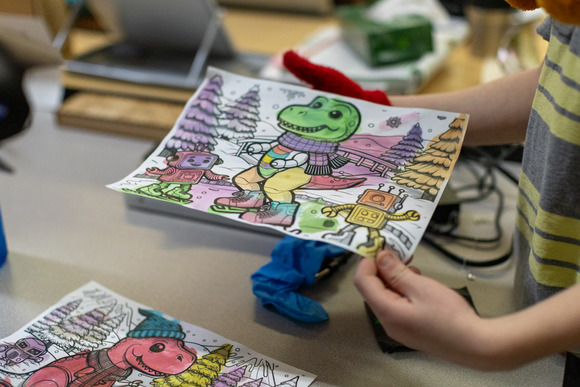
OLYMPIA—January 18, 2024—Today, the Office of Superintendent of Public Instruction (OSPI) published a roadmap to guide the implementation of Artificial Intelligence (AI) in Washington’s schools, making Washington the fifth state in the nation to publish state-level guidance on AI use in its public schools.
The guidance, which centers on human inquiry and empowerment, encourages educators and school leaders to embrace the use of AI as a tool to support personalized student learning, enhance productivity for school employees, and equip students to thrive in a rapidly changing technological world.
“Our commitment is not just to integrate AI into the classroom,” said State Superintendent Chris Reykdal in his opening message in the guidance. “It’s to do so with a vision that places our educators and students at the center of this digital revolution with a priority for human inquiry that uses AI for production, but never as the final thought, product, or paper.”
“AI is a powerful tool, but it only enhances learning if students and educators embrace an ‘H→AI→H’ approach,” Reykdal continued. “Start with human inquiry, see what AI produces, and always close with human reflection, human edits, and human understanding of what was produced.”
The guidance aims to equip students to be at the forefront of innovation, enabling them to understand and shape the technology that is increasingly becoming a part of their lives, and schools across Washington are already pioneering efforts to integrate AI into the learning environment.
On the edge of the Olympic National Forest, educators at Brinnon Elementary School in the Brinnon School District are using a human-centered AI approach to dial into the specific needs of their school community. As a small, rural school district, personalized instruction and streamlined administrative processes have allowed educators to focus more on supporting individual student learning.
|
 A student from Brinnon Elementary School holds up a watercolor sheet that their teacher designed using AI, which the student then painted.
Jake Rember, Director of Special Education and Director of Technology at Brinnon Elementary, uses AI to customize art projects for students with disabilities, develop classroom assessments based on student interests, and streamline administrative tasks. Human reflection and understanding are key parts of his process to create prompts and vet teaching materials created by AI.
"Giving teachers access to the ability to rapidly tailor education for the personal needs of a student is transformative," said Rember. "But with anything derived by AI, we want to be thorough in the information we give it and also vetting it to make sure that it is suitable for students."
A significant focus of the guidance is on the ethical application of AI in schools, including academic integrity, data privacy, safety, and respect. This principle is woven throughout the guidance to ensure that the use of AI technology upholds the values of honesty, integrity, and recognition of collective human knowledge.
The guidance also includes background and context about the emergence of AI as an industry, potential opportunities and risks for the use of AI in classrooms, key principles and values for educators to adhere to, considerations on the impacts to local school district policies, and an initial list of topics for district leaders to prioritize for educator professional learning.
Over the coming months, OSPI will continue to update the guidance with new resources, information, and tools. The agency will also continue to elevate emerging practices for how different school districts are implementing AI in the learning environment.
The guidance was developed by a diverse and experienced advisory group of school-, district-, and state-level educators; educational technology experts; researchers; and a K–12 public-school student.
“Incorporating AI into our educational system is about more than technology; it’s about preparing our students for a future where digital literacy is key,” said Dr. Trevor Greene, Superintendent of the Yakima School District, and a member of the advisory group. “Our focus remains steadfast on ensuring that every student benefits from these advancements while upholding the highest standards of safety and ethical use.”
The group is charged with ensuring that the state guidance aligns with the needs and expectations of Washington’s students, educators, and district leaders.
“This is our moment, Washingtonians, to lead the country and to lead the globe,” Reykdal said. “Washington is home to some of our most cutting-edge technologies and innovations, and it’s only fitting that our students will be on the forefront of the implementation of artificial intelligence for learning, creativity, and production.”
For More Information
|